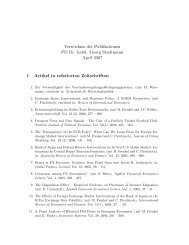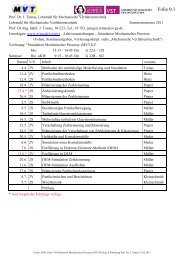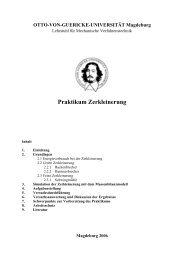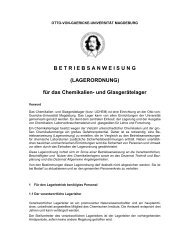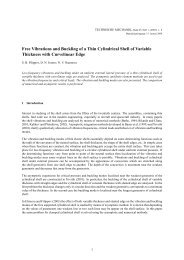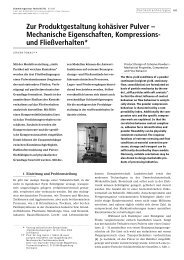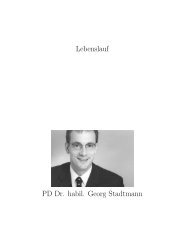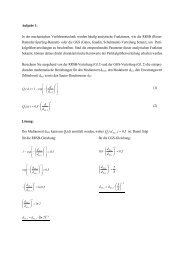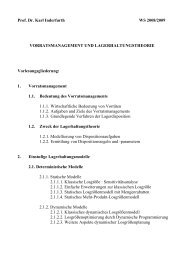Mechanics of nanoparticle adhesion â A continuum approach
Mechanics of nanoparticle adhesion â A continuum approach
Mechanics of nanoparticle adhesion â A continuum approach
You also want an ePaper? Increase the reach of your titles
YUMPU automatically turns print PDFs into web optimized ePapers that Google loves.
24J. TomasIntroducing the particle center <strong>approach</strong> <strong>of</strong> the two particles Eq. (6) in Eq. (55),a very useful linear force–displacement model <strong>approach</strong> is obtained again for κ A ≈constant:( )F + F = π ⋅r ⋅ p ⋅ κ −κ ⋅h(58)N H0 1,2 f A p KBut if one considers the contact area ratio <strong>of</strong> Eq. (63), a slightly nonlinear (progressivelyincreasing) curve is obtained. Using the elastic–plastic contact consolidationcoefficient κ due to definition (Eq. (71)) one can also write:π ⋅r⋅ p ⋅κF F h1+κ1,2 f AN+H0= ⋅KThe curve <strong>of</strong> this model is shown in Fig. 2 for titania powder which wasrecalculated from material data and shear test data [147, 149]. The slope <strong>of</strong> thisplastic curve is a measure <strong>of</strong> irreversible particle contact stiffness or s<strong>of</strong>tness, Eq.(34). Because <strong>of</strong> particle <strong>adhesion</strong> impact, the transition point for plastic yieldingY is shifted to the left compared with the rough calculation <strong>of</strong> the displacementlimit h K,f by Eq. (30).The previous contact model may be supplemented by viscoplastic stress-strainbehavior, i.e., strain-rate dependence on initial yield stress. For elastic–viscoplasticcontact, one obtains deformation with Eqs. (36) and (58) (κ A ≈ constant):F + F = π ⋅r ⋅η ⋅ κ −κ ⋅h(60)( )N H0 1,2 K A p,t K(59)A dimensionless viscoplastic contact repulsion coefficient κ p,t is introduced asthe ratio <strong>of</strong> the van der Waals attraction to viscoplastic repulsion effects which areadditionally acting in the contact after attaining the maximum pressure for yielding.κp,tp=η ⋅hKVdWThe consequences for the variation in <strong>adhesion</strong> force are discussed in Section2.3.3 [147].2.3.2. Unloading and reloading hysteresis and contact detachmentBetween the points U – E (see Fig. 3), the contact recovers elastically along anextended Hertzian parabolic curve, Eq. (7), down to the perfect plastic displacement,h K,E , obtained in combination with Eq. (58):K32= − ⋅K,E K,U K,f K,U(61)h h h h (62)



